"Handmade things are made by bodies."
A conversation with artist Julie Cloutier about the physical and financial realities of making ceramics, running a small business, and finding creative inspiration along the way.
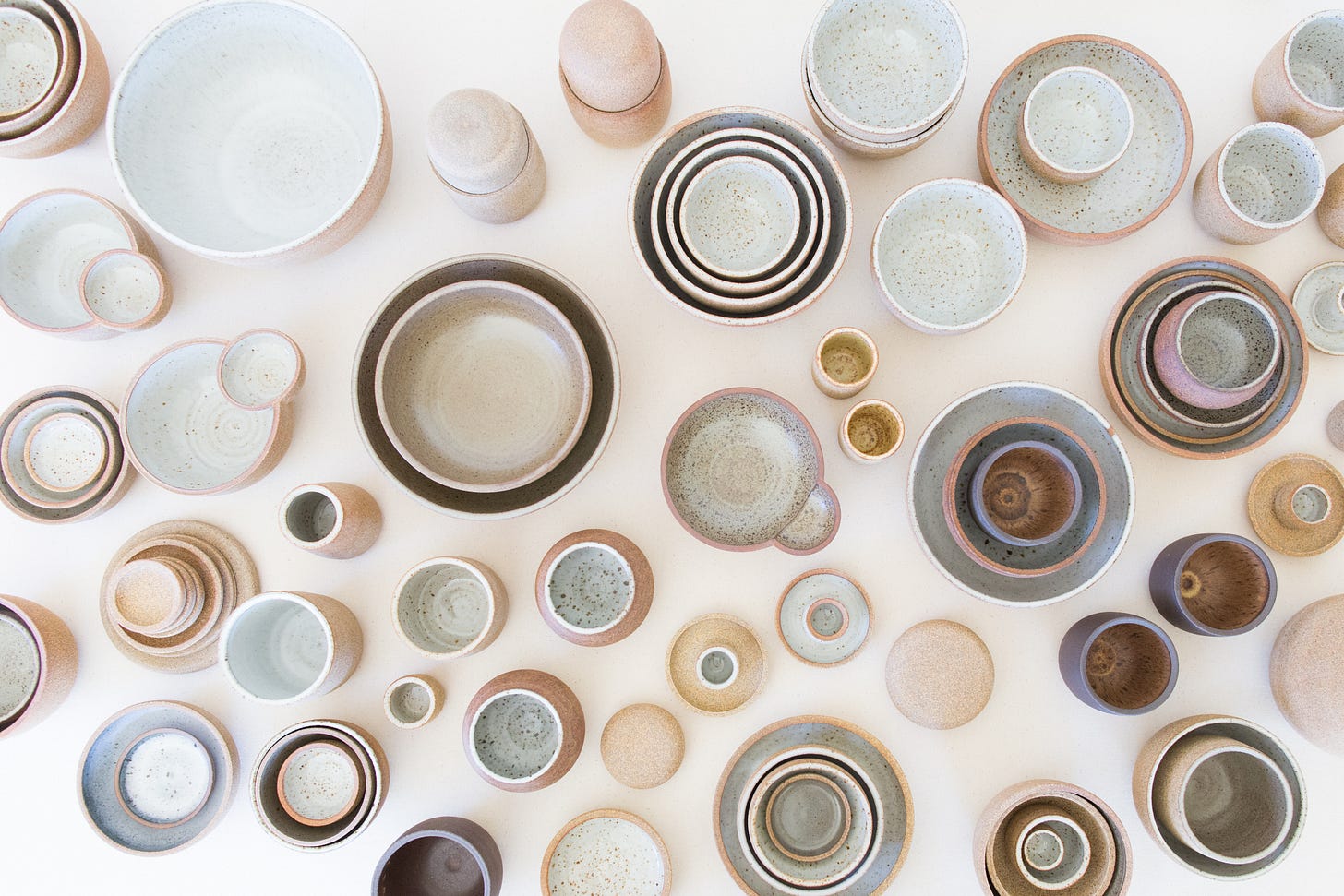
The writer
uses the term “beauty emergency” to describe those moments where you have to, “stop and pay attention to right at that moment, because it’s fleeting.”I love this sentiment (of course), as it’s such a reminder to be mindful of the surprising things that can stop you in your tracks and hold on to them for just a second longer than usual. But it also gets me thinking about the everyday moments that hold beauty yet may have dulled over time—the routine ones in which we might just be able to infuse a little more beauty and magic if we bring a little intention.
For me, that begins with the morning coffee routine. Over the past few years I’ve slowly collected an assortment of handmade cups and mugs (ok yes, and some not handmade). I try not to pick favorites, and instead, every morning choose a different one. It’s not just what it looks like, it’s how it feels. The tactile experience. Art held in your hand. A small pick-me-up even on the grayest of days. This isn’t so much a beauty emergency, it’s a beauty prescription: a dose given for wellbeing. And I get to do it all over again the next day.
Two of those cups hail from
’s studio. Besides just the ceramics, I am a fan of her other creative avenues as well. I took one of her Case for Making workshops a few years ago, and have never had so much fun painting watercolors of rocks. Seriously, this is the ultimate creative meditative activity.As soon as her newsletter
lands, I open it. It speaks to me in many ways that feels direct—she too is a full-time working artist—and I like getting not just an inside look at her own process, but an open and transparent view of the realities of running her art business. As creatives, as people who have chosen an alternative path, I think we have a responsibility to do just that, in order to hopefully pave a better path for all of us.I was excited to catch up with Julie to share a little more of her work and process with all of you. Grab a cup of coffee (in whatever mug speaks to you today) and enjoy this conversation.
-Anna
Anna Brones: When were you first drawn to pottery?
Julie Cloutier: My first career was in architecture. After grad school, I was an architectural junior designer working on the computer all day, every day. After a few years, the lack of creativity in my life was starting to build-up and the void grew so I signed up for an evening ceramics class on a whim. I wanted to use my hands and create something—playing with clay attracted me for that reason alone. I had no idea if I would like it, but was enamored with the process and just never stopped after that. I kept signing up for classes and never looked back, I think that was back in 2009?
Is creative work your full-time job? Or do you have another job that helps to financially support your creative work?
After a few years of being a hobbyist potter and selling work on the side for fun, I quit my day job to go full-time in June of 2016. I’m going into my 9th year of being 100% self-employed and running this small business. It’s not something I think of often, as every year can sometimes feel like my first, but it’s a huge accomplishment that I should be prouder of.
[Editorial note: YES, be proud Julie!]
I really appreciate your honesty in your newsletter about the economic realities of running an art business. Where do you feel like you're currently at with your business and in what direction does it feel like it's going?
Transparency is so critical to understanding how small businesses operate and I like to provide real perspective, share true numbers and showcase the behind-the-scenes wear and tear. I currently feel a bit at a crossroads. This year has been a rollercoaster. Slow sales for several months had me concerned, but a successful summer sale got me back on track. Some days I wonder how long can I keep doing this and other days, I’m beyond grateful and think I have the dream life and hope it lasts forever.
From experience, every year is different and I know there’s always uncertainty when running a small business. Adapting is one of the most important things I do. I just recently suffered from a severe work-related back injury and the recovery time will be very slow. As I write this, I’m unsure when I can get back on the potter’s wheel. It might be 2 weeks, it might be 2 months or even longer. So, I’m preparing myself for a year that may be less profitable than in the past, while also scheming to find other avenues of income to compensate for the lack of pots being made this month. Setbacks make me stronger, so I am trying to focus on the silver linings and what I can do as opposed to what I can’t.
What are some of the things that you think we as working artists don't talk about enough publicly, or aren't transparent about enough?
Labor.
Not just the time and minutiae of making the work but the toll it takes on the body. With pottery as an example, some people may think it’s meditative, loose and carefree, but working on a potter’s wheel is incredibly physical and taxing on the body. That doesn’t get reflected or translated into the cost of a mug. It’s truly blood sweat and tears.
Shipping costs is another big one. In the age of Amazon and endless free shipping, small businesses can’t compete.1
As a working artist, do you do any creative activities that are "just for fun," ie not tied to direct income? Do you ever struggle with giving yourself time for those activities when there's the pressure of running your business?
My clay work is not always as creative as it may seem, and I identify more as an artist and not potter because I work with many mediums. I love to paint, draw and create with collage even if those don’t pay the bills. I need to have creative projects always in the works that are separate from what’s for sale. It’s truly my therapy and I rely on outside creativity for my well being. So, yes, I definitely have “just for fun” creative activities. This past spring, I signed up for a dark room black & white photography course at the local community college and fell in love with the process. I’m now enrolled in the next photography course this semester and it’s just so freeing to make work for yourself. It’s never too late to try new things and sign up for a class. I’m a lifelong student, and I preach hard about exploring new endeavors, no matter your age.
It can be hard to squeeze in sometimes, but it’s a must. I make room in the schedule and switching to a 4-day work week two years ago has really made a difference in finding that extra time without feeling the guilt that comes along with the overworking mindset.
What do you feel is the most difficult part about being a working artist? What's the most fun?
Currently, two things feel really difficult. First, constantly having to put yourself out there to sell your work is challenging. Self-promotion doesn’t come naturally, but it’s absolutely necessary. Sometimes it feels fun and I enjoy crafting a newsletter or posting on Instagram, but I have to do it even when I don’t want to. My work is closely tied to me as I’m the only one that makes it, and so it can be hard to separate the feeling of selling yourself vs. selling a product.
Secondly, the physicality of my job has really come into focus lately. I’m 42 years old and my body is showing wear and tear from this demanding job. It’s not often talked about, but handmade things are made by bodies. My hands, my wrists, my back, my shoulders are what make what I do possible. Even if you are taking care of yourself the best you can, in the long run, the body is impacted.
Having my own schedule, collaborating with friends, making work for myself and creating functional wares that people can use in their home on the daily brings me a lot of joy. I’m endlessly grateful that I’ve been able to support myself for this long. Working with clay is also magic! When work comes out of the kiln, there’s an element of surprise every time and it feels so good. There’s a lot I can control, but there’s also so much unintentional beauty—that never gets old.
What does "success" look like for you as a working artist?
Success is making beautiful, good work that you’re really proud of. Success is sharing the work I make with people and seeing them cherished and used in their homes. Success is paying the bills and having a little left over. Success is waking up every morning and getting to do what you love.
Do you have a specific creative routine or schedule to your workday?
My mornings are very slow. It’s important to me that I wake up without appointments, meetings or to-do’s right off the bat. Enjoying a simple morning with my cup of tea and breakfast in the garden is a work perk and it usually takes me a few hours before I head to my studio that’s in the garage. I work from home, so I need boundaries.
I work 4 days a week and I try really hard to not let that get altered, because it’s so easy for me to work 6-7 days in a row. Each week, I give myself two days of making on the potter’s wheel and one day of trimming and finishing the wet work. The fourth day is more varied. It really depends on what’s going on. I might be preparing for a sale or either glazing work and loading a kiln. Sometimes that flex day is for a photoshoot and editing images, webshop updates or creating a newsletter. Shipping online orders and responding to emails get sprinkled in throughout the work week when I need a break from the physical work.
The other 3 days of the week are for non-work-related creative endeavors and life stuff. But I make it a point to set aside creative windows on my off days. Having that extra time allows me to sign up for a workshop or class like the photography course I’m in without hesitation.
I'm really interested in how artists ebb and flow in their creative process. How do you feel like your creative process works for you?
I definitely go through major and mini waves with creativity. Summer is my when I feel my best self and am more open to saying yes, trying new things and I’m more productive in the studio. I rely on this time to carry me through the busy holiday season. When I get stuck or am not feeling like creating, I switch things up. Sometimes that means altering the routine, or imposing some constraints or introducing a new material. In the past I’ve created mini residencies at home like a 3-day art vacation which can be a nice change of pace.
5 essential tools in your creative kit?
Trace paper and pencil
A child-like sense of playfulness
Spending time in nature and truly observing and soaking in what’s around you
My Case for Making watercolor travel set
35mm Film Camera
What are you working on right now that you're excited about?
I offer a Cup Club subscription2 and the work I make for this has been so fun and regenerative. Every quarter I create a limited-edition drinking vessel that never gets recreated again. The playfulness that comes out of every piece has been a wonderful addition to my regular studio production. It’s a sweet counter balance to the repetitive nature of my pottery practice and it really pushes me out of my comfort zone even if the pieces are very much my style in the end. It forces me to experiment more and try new things. I might spend a day creating 30 different pieces, and I’ll usually end up with a 2-3 really good designs that I move forward with.
Artists create. They imagine new worlds, they express themselves, they reinterpret their surroundings. Being an artist is not something I chose, it’s simply what I am.
-Julie Cloutier
What's a project that you would like to work on?
For a few years now, I’ve had some thoughts about making architectural hardware out of stoneware. Cabinet knobs, door pulls, cover plates, house numbers, details for the home. I think it could be fun to have a clay project that merges with my love for architecture. I haven’t found the time to explore this, but I hope to one day!
What does it mean to be an artist?
Artists create. They imagine new worlds, they express themselves, they reinterpret their surroundings. Being an artist is not something I chose, it’s simply what I am.
What does it mean to be creative?
Being creative is just a way of being. I truly believe every single person is creative, it’s just that a lot of people don’t act on it, realize it or have squashed it away.
You can support Julie’s work by checking out her shop or signing up for her newsletter!
Check out more Creative Fuel interviews here.
RESOURCES + INSPIRATION
Whenever I do an interview I ask for a list of recommendations, to see what people are reading and paying attention to. Here is what Julie has on her radar right now.
My favorite book of the year: All Fours by Miranda July. It's a must read, I've been telling all my friends about it.
A book I keep returning to for inspiration: Swimming Studies by Leanne Shapton
Another book I keep returning to: How to Do Nothing by Jenny Odell
A book I just received that I can't wait to dive into: Marguerite Wildenhain and The Bauhaus: An Eyewitness Anthology
UPCOMING CREATIVE FUEL WORKSHOPS
Thursday September 26, 5-6pm PT: Create+Engage Studio Session
This will be a little more casual than the usual Create+Engage workshops, and we’re hoping that it will encourage you to use this time to come and work on some type of creative action. Make and write some postcards, draw some political poster designs, etc. Sign up here.
Creative Fuel is made possible by paid subscribers. If you enjoy getting this newsletter, please consider subscribing. Or send this newsletter to a friend!
Do you enjoy Creative Fuel? You can support this work by becoming a paid subscriber. You can also order something in my shop, attend one of my workshops or retreats, or buy one of my books. Or simply share this newsletter with a friend!
Yes, yes, and yes. Just remember anytime that an artist offers a “free shipping” deal, it is in fact not free. Nice maybe, fun maybe, encouraging for you to buy more things maybe, but not free.
Julie is doing another Cup Club subscription for 2025. Sign ups will open in November, so be sure to sign up for her newsletter for updates!





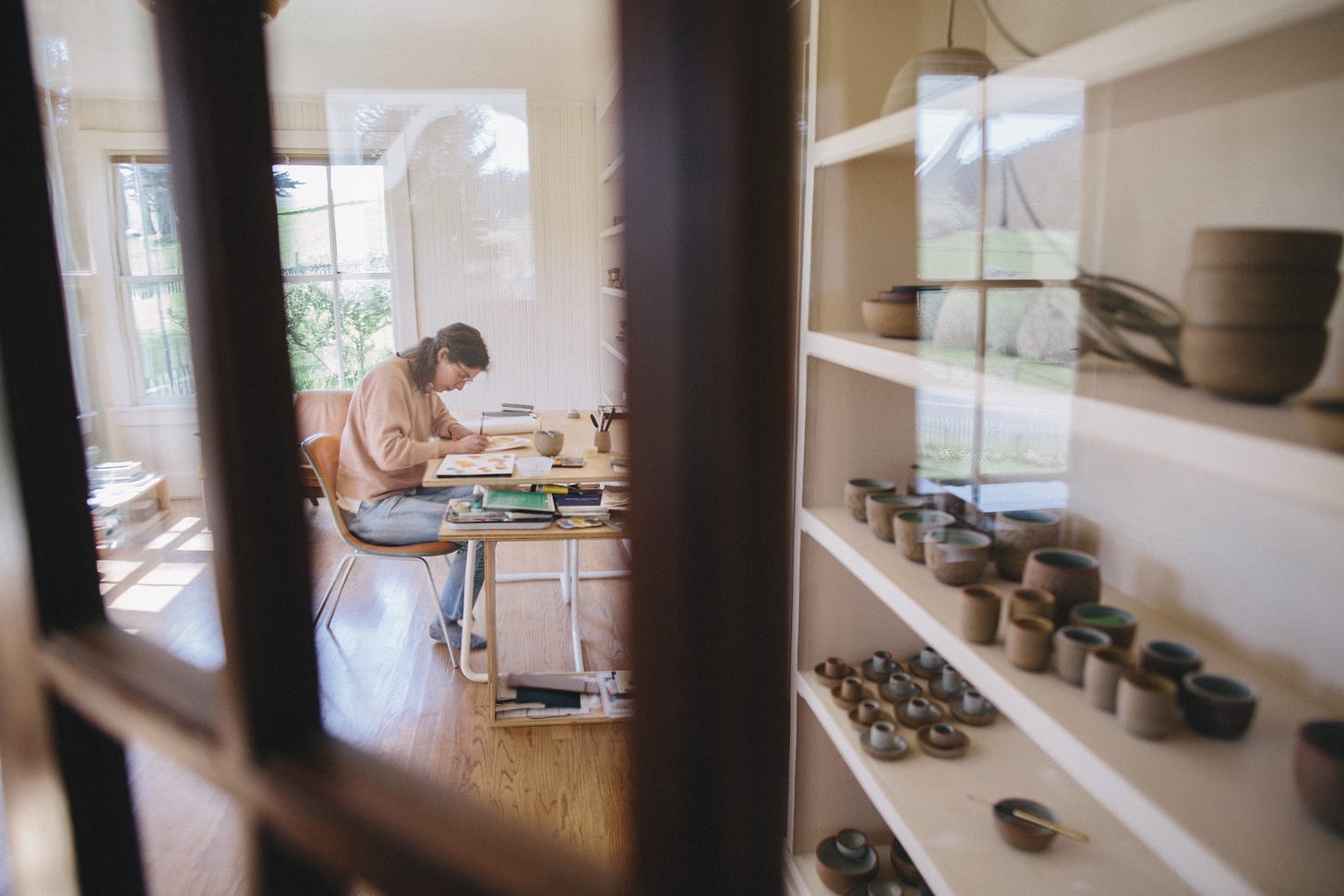

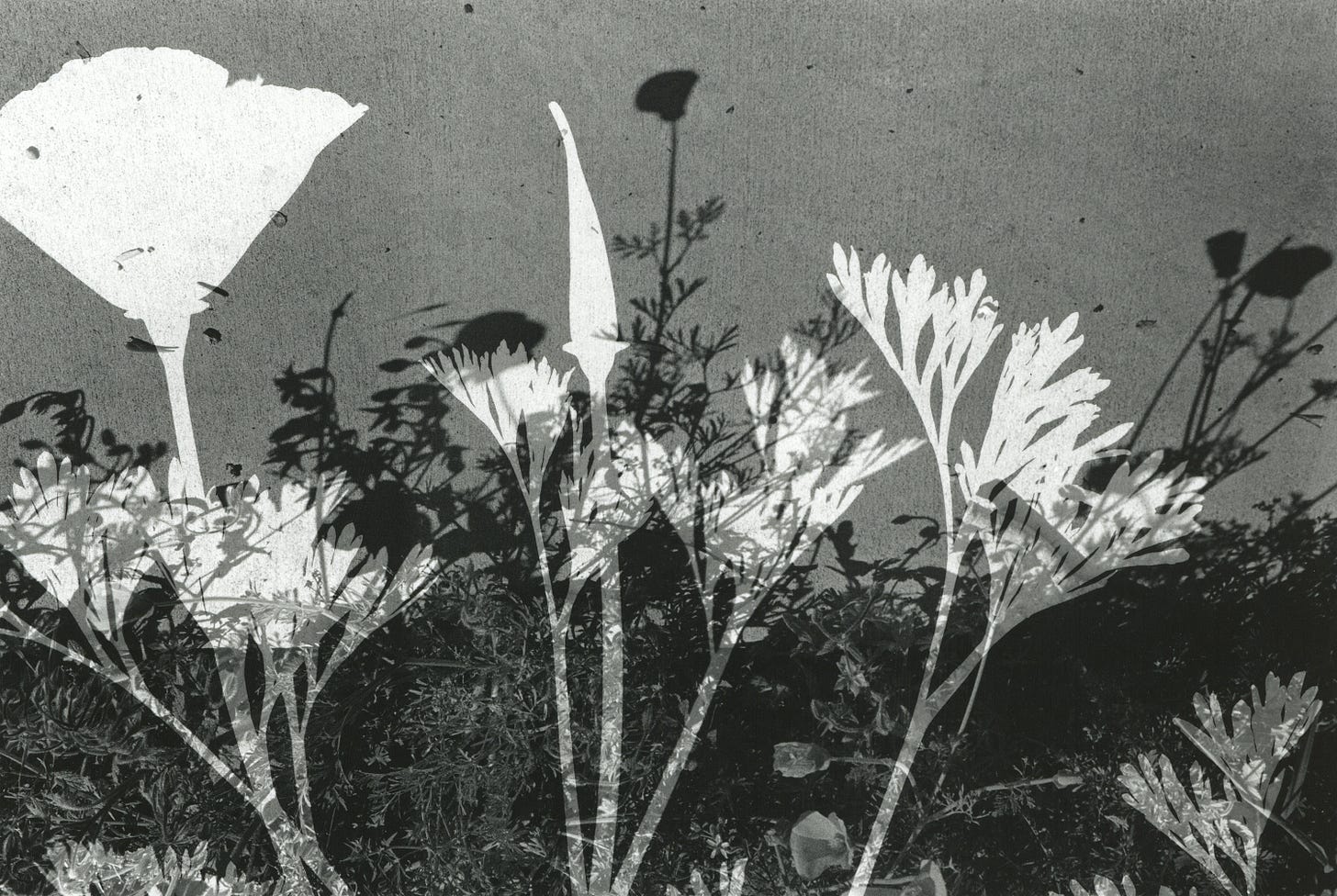
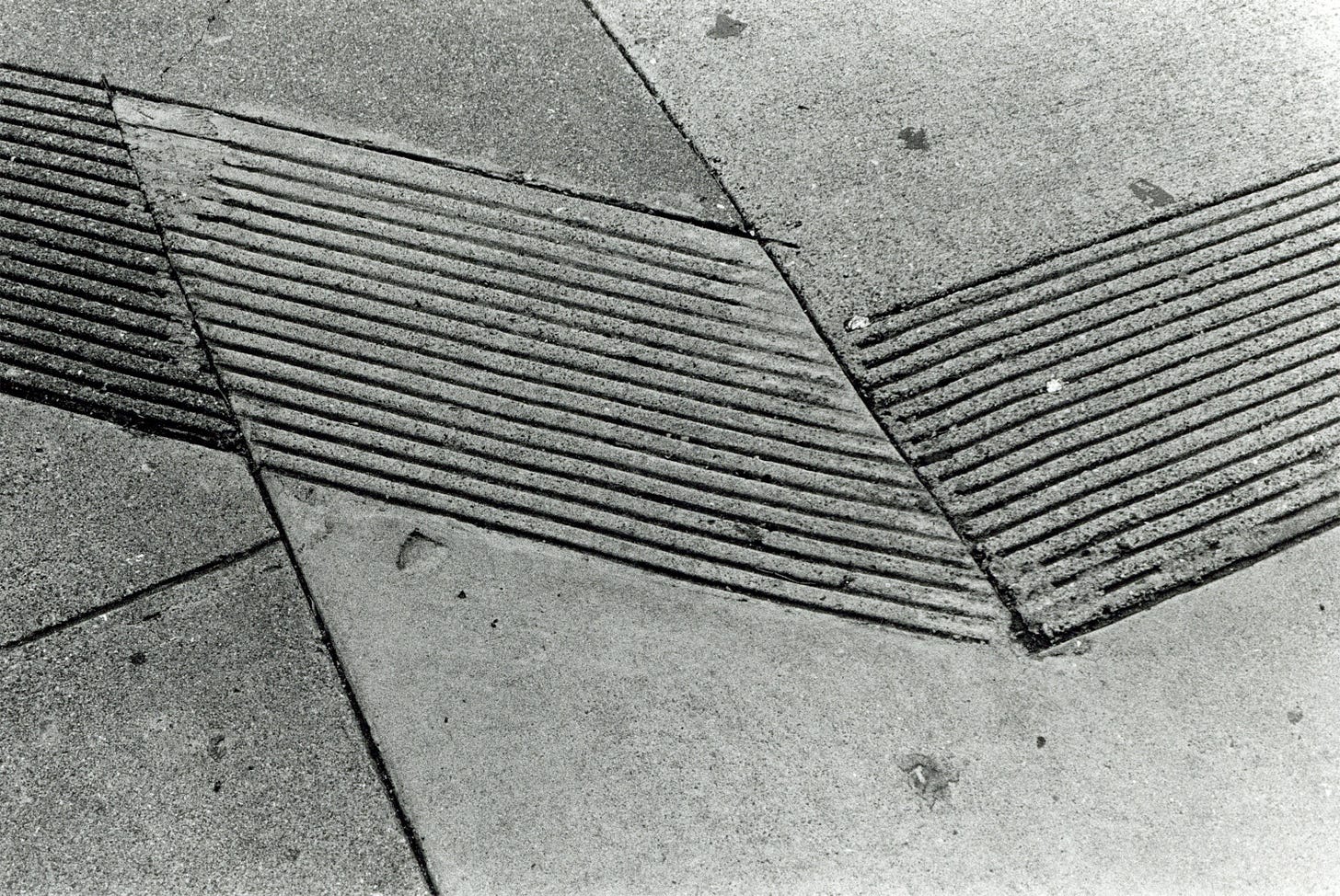
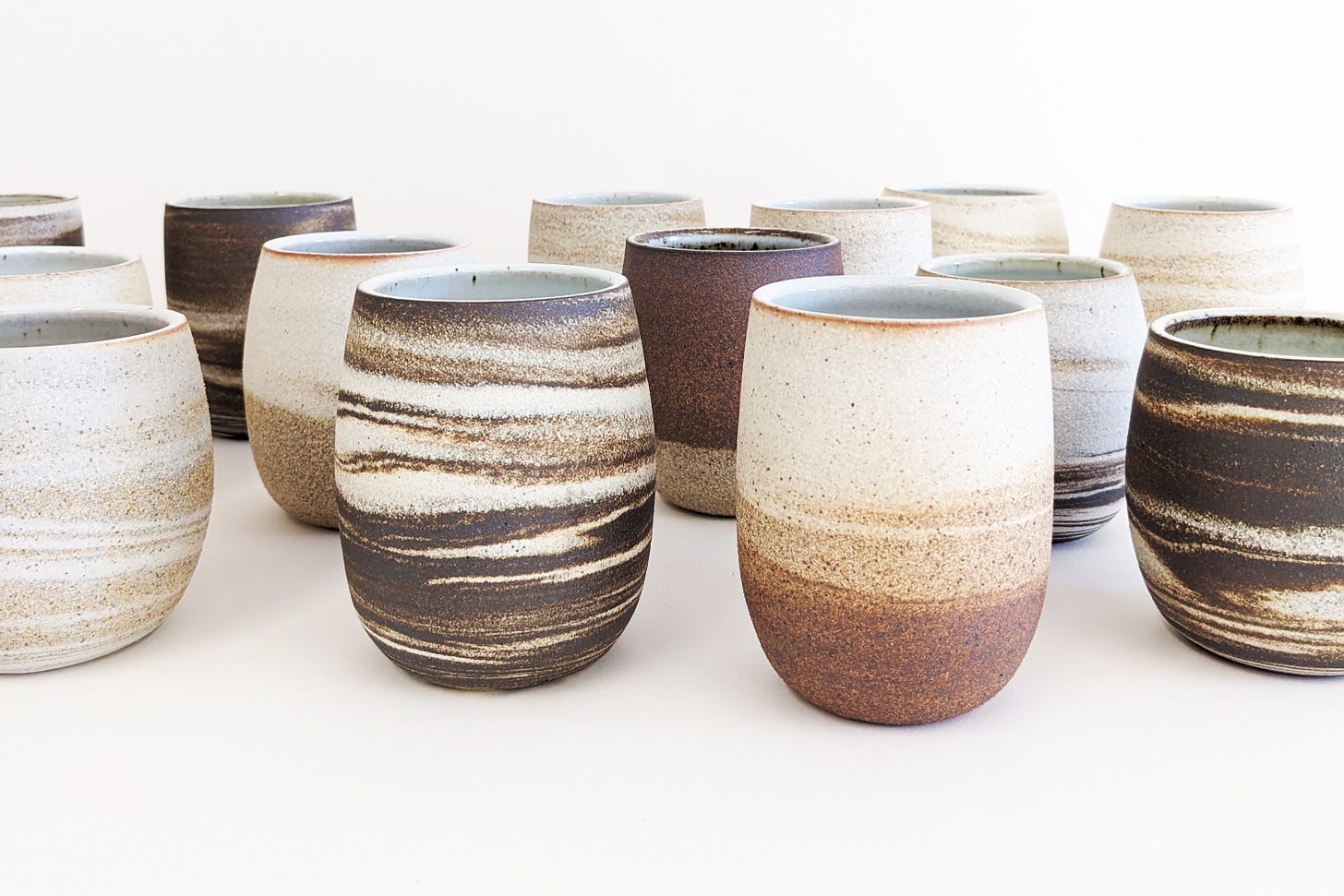
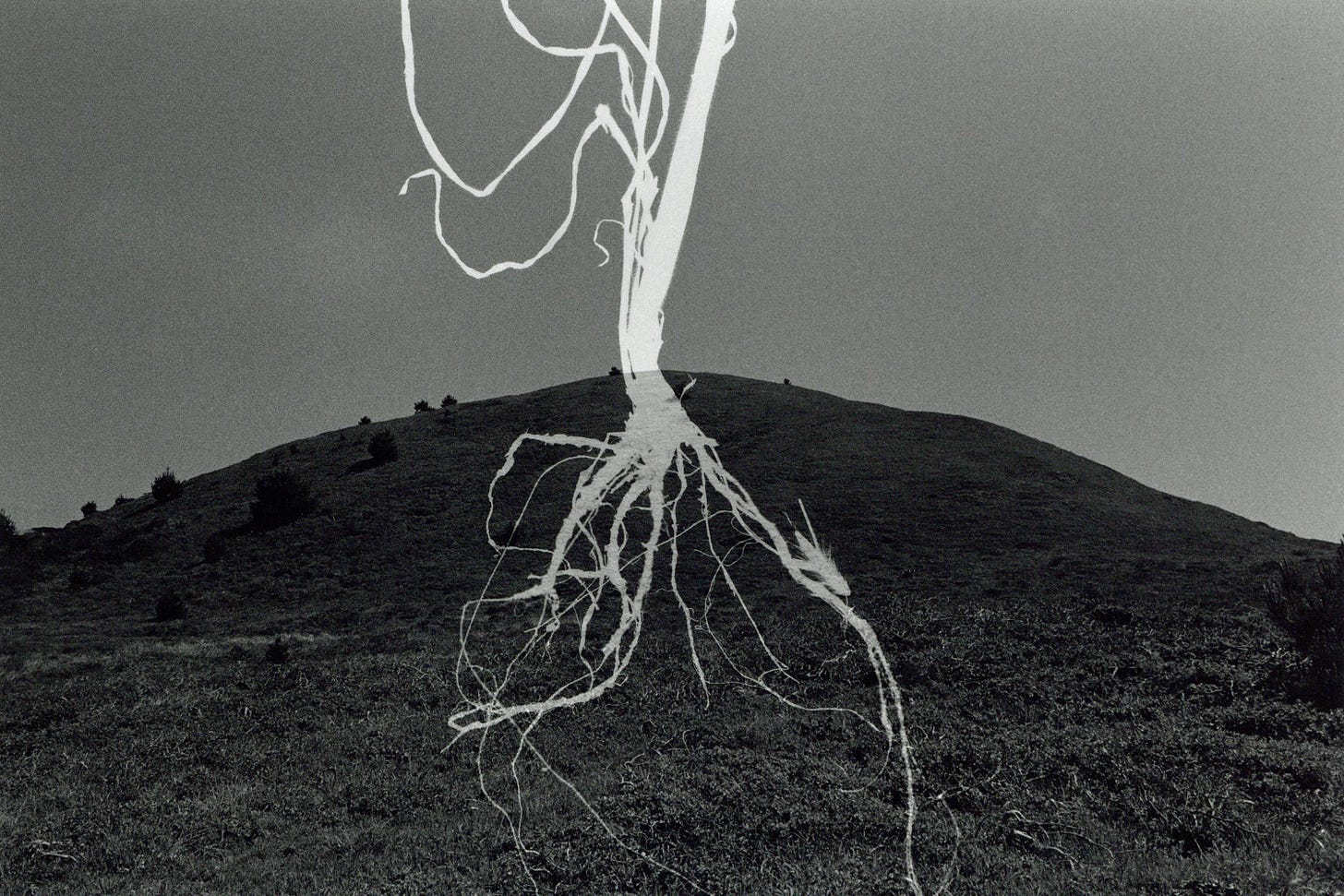
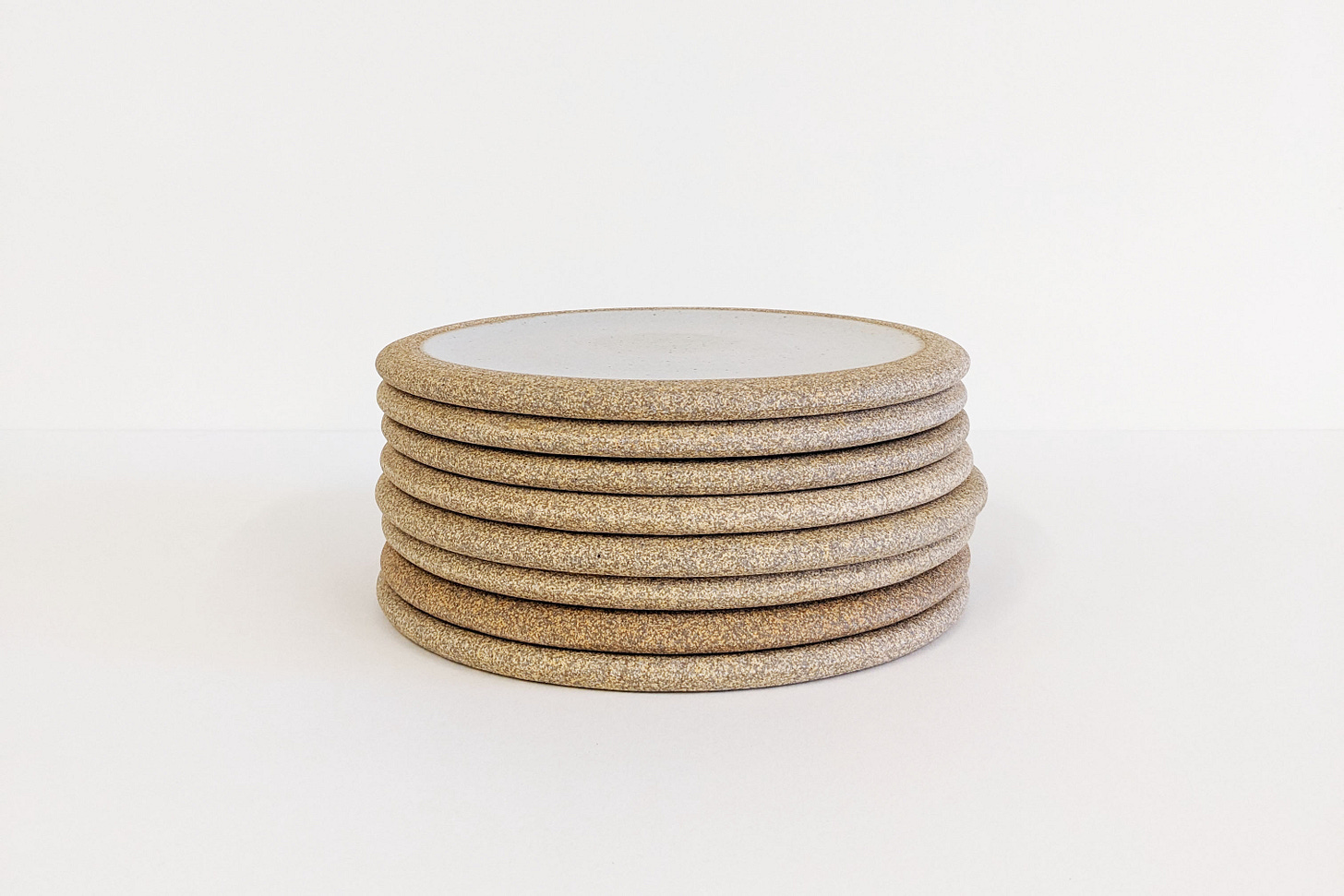

So lovely. And now I know what to do with all ~50 of my mugs (my husbands question “what use could you possibly have for that many mugs?”). I hope she also decides to teach another one of those watercolor classes! Ceramics for sure does a number on the body.
So lovely to read, as is Clayfulness. It feels so supportive to read other artists’ perspectives and processes in business- it has helped me so much!